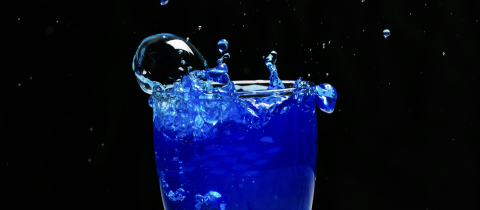Throughout its lifetime, tuberculosis (or TB) has gone by many names. The ancient Greeks called it “phthisis”. In the 1700s, it was “the white plague”. And in the 1800s, it was “consumption” – perhaps because of how the rapid weight loss caused by TB seems to consume the patient. Tuberculosis is not just of historical interest; it is still with us today and is a modern global crisis. The disease is the 13th leading cause of death and the second leading infectious killer (first place currently goes to COVID-19). While most TB cases are overseas, TB still exists in Canada. The incidence rate in the general population is 5 per 100,000, and much higher in Inuit people at 135 per 100,000.
An essential step for preventing the spread of TB is screening for it. In Canada, most people who work in hospitals, hospices, or other high-risk areas are tested for TB regularly using a tuberculin skin test (TST).
What can you expect when getting a TST? The healthcare practitioner will inject tuberculin, an extract of the bacterium that causes tuberculosis, below your skin with a special needle. If you aren’t squeamish and decide to watch the injection, you’ll see a small circle of skin bubble up – called a wheal – as the practitioner injects fluid into your arm (don’t worry, this is temporary). The practitioner will circle the wheal with a pen, and when you return within 48 to 72 hours, will look within the penned circle to find any signs of reaction. The result of the test depends on the amount of swelling (or hopefully lack of swelling). If there is no swelling, the TST is negative, indicating you likely were never infected by TB bacteria. If there is swelling, the TST is positive, indicating you have been infected. You’ll need to do more tests, such as a chest x-ray and physical exam, to determine if you have active TB disease or a latent TB infection.
This widely used test wasn’t exactly intentionally created. Instead, it was stumbled upon in one physician’s quest to find a cure for TB.
Bacteria for the History Books
In the 1800s, no one knew what caused TB. Some believed it was hereditary; others thought it was caused by excessive dancing. A few even speculated it was not a disease but the work of vampires. German physician Robert Koch was the first to discover the bacteria that we now know cause TB. His meticulous work on anthrax bacteria was the perfect preparation for Koch to capture, isolate and cultivate Mycobacterium tuberculosis. Mycobacterium tuberculosis is a rod-shaped bacterium that is part of the larger Mycobacterium family, which includes the bacteria that causes leprosy, called Mycobacterium leprae. Koch’s groundbreaking discovery showed that TB is an infectious disease caused by microscopic bacteria (not vampire attacks). Always the hardworking scientist, Koch wanted to go a step further and discover a cure for TB.
Koch created the first formulation of tuberculin by heating and filtering a culture of Mycobacterium tuberculosis. Despite Koch’s initial hopes, the scientific community found that tuberculin had no value as a cure for TB. But the newly created substance showed promise as a diagnostic tool for the disease. In 1908, Charles Mantoux showed that an intradermal injection of tuberculin was the best method to detect the disease (hence why the TST is sometimes called the Mantoux test). In the 1930s, Florence Seibert discovered a way to isolate and standardize the potency of tuberculin solutions, creating the Purified Protein Derivative (PPD) Tuberculin that is still used today!
Our T-Cells Signal for Trouble
How does the TST tell us who has TB, and why does swelling indicate a positive result? The answer lies in specialized cells that are part of our immune system. The purpose of our immune system is to protect us from intruding pathogens such as bacteria (like Mycobacterium tuberculosis) or viruses (like COVID-19). One component of our immune system is the adaptive immune system. As the name suggests, this system creates defences specifically adapted to each new bacterium or virus we encounter. The adaptive immune system creates and ‘trains’ specialized T-lymphocytes, sometimes called T-cells, to recognize the bacteria or virus and remember it for life. In the case of TB, if you’ve been exposed to Mycobacterium tuberculosis, your body will have already created and trained those T-cells. When PPD tuberculin is injected during the test, your T-cells think it is Mycobacterium tuberculosis and will initiate an immune response, leading to swelling at the injection site. People who haven’t been exposed to Mycobacterium tuberculosis will not have those specially trained T-cells, so injecting PPD tuberculin won’t elicit any reaction.
PPD tuberculin is good at showing those exposed to TB but is not effective at preventing TB disease. Finding a widely effective TB vaccine has proven to be one of the most significant challenges for modern medicine. The Bacille Calmette-Guérin vaccine is commonly used for young children in countries with high rates of TB but has low efficacy in the general population. In June 2023, a new TB vaccine received funding to start large clinical trials, with hopes that this will be the first widely effective vaccine.







